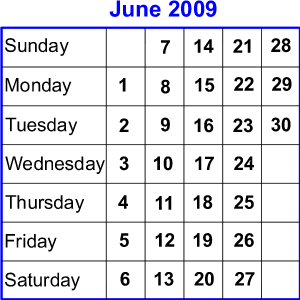Copyright © University of Cambridge. All rights reserved.
'Today's Date - 01/06/2009' printed from https://nrich.maths.org/
Show menu
Why do this problem?
This activity is a good number exploration. It gives pupils the opportunity to show the number relationships that they are able to use and therefore is a 'low threshold high ceiling' task. It also allows pupils to develop their own methods of approach for such an open activity. It could lead to conversations about
estimating and working systematically as pupils explain their ways of tackling the challenge.
Possible approach
Sometimes it's good to start an activity apparently out of "thin air". So you might choose a pupil's birthday that has some potential, or save the activity until the date has some possibilities. Write the date on the blackboard - to celebrate the pupil's birthday or because it's that day's date - and then say "Oh look I think there may be something special about that date!". This will
initiate excitement and discussion.
You can lead into the activity as shown on this site at whatever level suits the group best. Younger or less experienced learners may be happy to begin with addition and subtraction, but the beauty of the activity is that children can show you what they know as they are not constrained.
This challenge would lend itself to being a 'simmering activity' so that you could have a space on the wall where children can post up further findings over a week or more.
Key questions
How have you decided where to look for dates that will be interesting?
Tell me about this date.
Possible extension
What about taking in the time as well?
At $1$:$41$ on $7/7/2009$ could be $1 \times 41 \times 7 \times 7 = 2009$
so, $7$:$41$ on $1/7/2009$ would be $7 \times 41 \times 7 \times 1 = 2009$
(Years with many solutions are $2016, 2040, 2052, 2070, 2080$ and $2088$ and some may like to follow up the fact that these years are also just 1 away from a prime!)
Alternatively, learners might like to try the How Many Times? problem which investigates consecutive numbers appearing on a digital clock.
Possible support
Some pupils will find it necessary to have cards with numerals on to move about in front of them and some will feel more confident if they have the use of a calculator.
